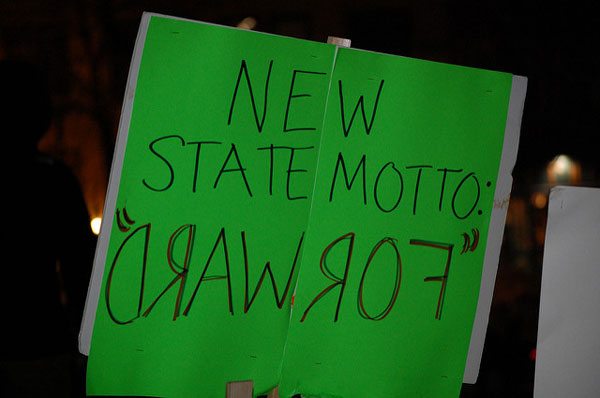
November 17, 2017; CNN Money
According to a report cited by CNN, since Act 10 was passed in Wisconsin in 2011, the educational environment has taken a turn for the worse. Now, the Supreme Court could put something similar in place for all public sector unions around the country, as it has agreed to hear the case of Janus vs. AFSCME.
The CNN article cites a report from the Center for American Progress Action Fund which used information gathered from the Wisconsin Department of Public Instruction (DPI) to analyze the impact of the law known as Act 10, which virtually gutted the collective bargaining rights of public school teachers and significantly weakened the power of the teachers’ union. The findings of the Center’s research include:
- Median teacher compensation has decreased by 8.2 percent.
- Median teacher benefits have decreased by more than 18 percent.
- Teachers leaving the profession spiked immediately after Act 10 was passed and has since settled at an average of more than eight percent per year, more than two percent higher than the average before the law was passed.
- The number of inexperienced teachers (under five years) has increased to almost 25 percent of the educators in the state. This is particularly true in rural districts, where young teachers get their start and then jump to urban districts for higher pay a few years later.
An article by Mother Jones covering the same study cites a conversation with a professor at the University of Wisconsin teaching certification program, ranked by US News and World Report as one of the best in the country. This professor said that prior to Act 10, they would receive 300-400 applicants for their 125 openings, annually. Now they get one applicant per opening.
There is some indication that academic achievement has felt a negative impact from these results, but that has been difficult to track. The standardized tests used to measure student achievement have changed several times since Act 10 was passed. The CNN article cites more conservative thinkers who suggest that graduation rates and the number of students taking AP tests (both of which have increased) would be a better guide. Of course, the number of students taking the tests does not indicate if those students are doing well on them, so that argument seems weak. In logic model terms, they are proposing an output, not an outcome, as the measure of success.
Sign up for our free newsletters
Subscribe to NPQ's newsletters to have our top stories delivered directly to your inbox.
By signing up, you agree to our privacy policy and terms of use, and to receive messages from NPQ and our partners.
Meanwhile, the Supreme Court recently agreed to take up a case filed by a public sector employee against AFSCME, suggesting that the requirement to pay a fee to a union to which he does not want to belong denies his First Amendment rights. Just after the death of Justice Antonin Scalia, the court ruled in a similar case but was deadlocked, so the ruling of the lower court in favor of the union was upheld.
If the court rules in favor of the plaintiff, it would significantly weaken the power of public sector unions, including teachers’ unions, around the country. It would in large part make every state a “right to work” state. If the experience in Wisconsin is any indicator, this could have a negative impact on a number of public sector services, such as public education.
In the interest of full disclosure, this writer’s wife is a former public school teacher in Wisconsin who found that her retirement package was significantly reduced as a result of Act 10 and has since chosen to leave the profession. Her experiences are not included in this newswire.
—Rob Meiksins











